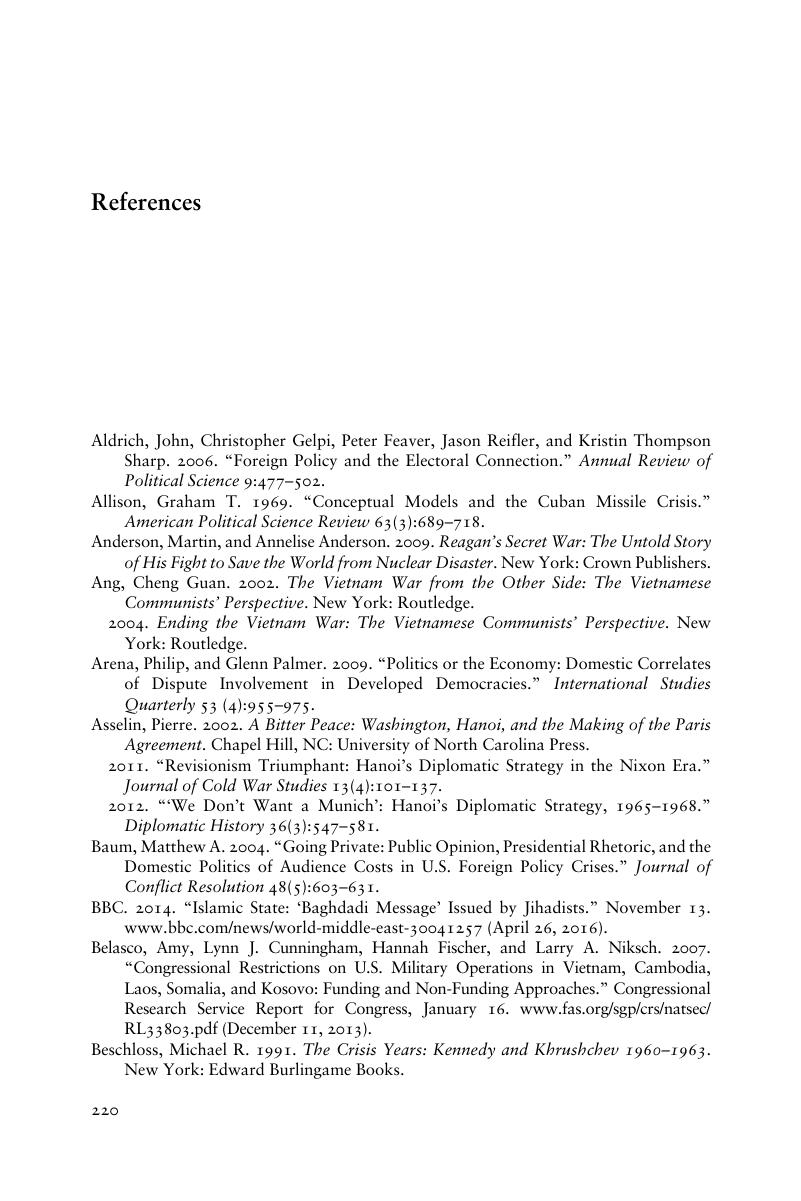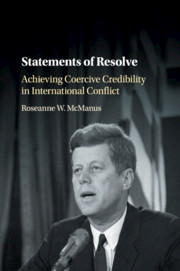References
Published online by Cambridge University Press: 21 July 2017
Summary

- Type
- Chapter
- Information
- Statements of ResolveAchieving Coercive Credibility in International Conflict, pp. 220 - 232Publisher: Cambridge University PressPrint publication year: 2017

